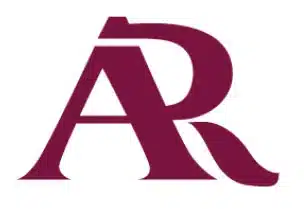Drug Schedules and What They Mean

Drug Schedules and What They Mean
When you read about different drugs, you will often see references to how the drugs are classified on the controlled substances schedules. What are the controlled substances schedules? How and why are drugs classified in this way? Let’s explore what drug schedules are and what the schedule numbers mean in relation to drug regulation by the federal government.
We will also provide information on addictive drugs like heroin and cocaine. These drugs may require addiction treatment in a rehab facility.
The Controlled Substances Act of 1970
In 1970, the United States Congress passed the Federal Comprehensive Drug Abuse Prevention and Control Act, a law that was designed to regulate the manufacture, import/export, distribution, and dispensing of drugs in the United States. The law, which went into effect on May 1, 1971, is more commonly known as The Controlled Substances Act.1
The Controlled Substances Act requires anyone who manufactures, distributes, or dispenses controlled substances to be registered with the Drug Enforcement Administration (DEA), which is a branch of the United States Department of Justice (DOJ). The registration requirement allows the DEA to track controlled substances through a closed system, ensuring that drugs are regulated from the time they are produced to the time they are prescribed and dispensed to the patient.1 Anyone who manufactures, distributes, dispenses, or possesses controlled substances outside this system is subject to prosecution under this law.
What Are Controlled Substances?
Drugs that are labeled as controlled substances under the Controlled Substances Act are drugs that are considered to have a high potential for abuse. Drugs that are considered the most likely to be abused and that are not used for medical purposes are given the tightest controls, while drugs that are used for medical purposes and/or have less potential for abuse are given fewer controls.
Not every medication is regulated under the Controlled Substances Act. Medications that do not have the potential for abuse do not appear on the schedules. However, medications that are not normally regulated under this law may appear on the schedules if they are combined with medications that are controlled under the act. An example is acetaminophen (Tylenol©), which by itself is not a controlled substance, and which is readily available for purchase over the counter. It does appear on the controlled substances schedules, however, in instances when it is combined with opioids to relieve pain.
Are Controlled Substances Illegal?
Whether or not controlled substances are illegal depends on where they fall on the controlled substances schedules. Most controlled substances are legal for medical use but are regulated. This means that certain rules must be followed when controlled substances are produced, prescribed, and purchased. Medications for the treatment of attention deficit hyperactivity disorder (ADHD) are good examples of this. The medications are legal, but drug companies, pharmacies, and physicians who deal with these medications must be registered with the DEA and must follow the DEA’s rules. Patients who take these drugs must obtain them through a physician and pharmacy registered with the DEA, must sign for the medications, and can only purchase a limited supply at a time. Obtaining medications for ADHD through any other method is illegal.
There are also certain over-the-counter (OTC) medications that contain chemicals listed on the controlled substances schedules. These chemicals have the potential for abuse as ingredients in illegal, addictive drugs. An example is pseudoephedrine, normally an ingredient in cold medicine, which can be extracted from the cold medicine and used as an ingredient in the production of methamphetamine (crystal meth). Cold medicines that contain pseudoephedrine are regulated and must be dispensed and signed for through DEA-approved pharmacies.
What Are the Drug Schedules?
The drug schedules are a system that classifies controlled substances according to their potential for abuse and the resulting level of regulation under the Controlled Substances Act. There are five schedules, with the substances that have the most potential for abuse listed first and the substances with the least potential for abuse listed last. The following are detailed descriptions and examples of substances included under the five controlled substance schedules. Due to the number of substances included under each of these schedules, we will not list all the substances on any schedule in this article but will include examples of the more commonly used and abused substances. A comprehensive list of controlled substances and their places on the schedules can be found online.2
Schedule I
Schedule I controlled substances have the highest potential for abuse and are not used for any accepted medical purpose. These drugs have no accepted safety controls for their use and are considered to be the most dangerous drugs. Substances that appear on Schedule I are illegal to produce, prescribe, or dispense. Some of the best-known Schedule I controlled substances include:3
Marijuana (THC) (includes synthetic marijuana)
LSD
MDMA (Ecstasy)
Mescaline (Peyote)
Psilocybin
GHB
Methaqualone (Quaaludes)
Cathinone (Khat)
Designer Drugs and The Controlled Substances Act
Since people who sell drugs illegally frequently formulate new drugs, commonly called “designer drugs,” for illegal drug use, a substance does not have to be on the drug schedules for a person to be prosecuted under the Controlled Substances Act for the illegal distribution of a Schedule I drug. If the substance is similar in its structure and potential for abuse to Schedule I substances and it has no accepted medical purpose, a person distributing such a drug can be prosecuted for distributing a Schedule I substance, and penalties for this crime can be imposed.3
The Controlled Substances Act and Marijuana
Marijuana’s location on the drug schedules remains Schedule I, even though an increasing number of states are reclassifying marijuana under their own state laws as a controlled substance with medical uses or are legalizing it entirely. Even though these states have loosened the restrictions on the distribution and use of marijuana, possession and sale of marijuana can technically still be prosecuted as a Schedule I offense under the Controlled Substances Act. This may change in the future, depending on how the United States Department of Justice responds to the changes in state laws.
A Note on CBD Oil
Cannabidiol (CBD oil), which is extracted from the cannabis plant like marijuana, is now legal in the United States as long as the substance contains no more than 0.3% THC. Individual states have also imposed regulations on CBD oil, which may affect its legal status in those states.
Schedule II
Schedule II controlled substances are drugs that have a high potential for abuse and a high risk of leading to significant physical and psychological addiction, but that also have accepted medical uses in the United States. Some accepted medical uses may have severe restrictions. The better-known Schedule II controlled substances are:
Methamphetamine (crystal meth)
Amphetamine/Dextroamphetamine (Adderall©)
Morphine
Codeine
Oxymorphone
Methylphenidate (Concerta©)
Pseudoephedrine and Phenylephrine (cold medicine ingredients) (lower doses of these substances appear on Schedules lll and lV)
Hydromorphone (Dilaudid©)
Methadone
Pentobarbital
Secobarbital
Phencyclidine (PCP)
As with Schedule I controlled substances, people who possess or distribute “designer drugs” that are similar in structure and effect to Schedule II drugs can be prosecuted under the Controlled Substances Act for Schedule II offenses.3
It may surprise you to know that some Schedule II controlled substances, such as cocaine, opium, and PCP, actually have medical uses in the United States. These medical uses are very limited and restricted to specific conditions and procedures. These drugs are not otherwise available legally in the United States.
Schedule III
Schedule III controlled substances have potential for abuse, but the potential is less than that of Schedule II substances. These drugs have accepted medical uses in the United States. Their use can lead to a low to moderate risk of physical and psychological dependence. Well-known Schedule III controlled substances include:
Anabolic steroids (testosterone and others)
Codeine combined with aspirin, acetaminophen, or ibuprofen (Tylenol 3©)
Hydrocodone/Acetaminophen combination, 5mg/500mg or 10mg/650mg doses (Vicodin©)
Ketamine
Buprenorphine
Butalbital
Thiopental (Pentothal©)
Phendimetrazine
As shown by this short list, some controlled substances appear on more than one schedule, depending on the dose of the medication and on any other drugs with which the substance may be combined. For example, hydrocodone is classified as a Schedule II substance, but when its strength is lessened by combining it with acetaminophen and dispensing it at lower doses, it drops to Schedule III.
Schedules IV and V
Schedule IV
Schedule IV drugs have a low potential for abuse. These drugs have medically accepted uses in the United States. The risk for addiction occurs primarily when these drugs are used against medical advice or when they are used for long periods of time. Here are some well-known Schedule IV controlled substances:
Diazepam (Valium©)
Temazepam (Restoril©)
Zolpidem (Ambien©)
Propoxyphene
Dexfenfluramine (Redux©)
Chloral Hydrate
Tryptophan
Many Schedule IV controlled substances are used as medications for anxiety and insomnia.
Schedule V
Schedule V controlled substances have a low potential for abuse and have medically accepted uses in the United States. Many of these drugs appear on Schedule V due to the fact that they are combination drugs containing low doses of drugs on stricter schedules. Here are some well-known Schedule V controlled substances:
Pregabalin (Lyrica©)
Brivaracetam (Briviact©)
Lacosamide
A large number of cold and cough or allergy medications containing small amounts of codeine, pseudoephedrine, and other Schedule II substances (Nalex AC©, Robitussin AC©, others)
Substances Not Regulated Under the Controlled Substances Act
While the list of substances that have the potential for abuse is very large and comprehensive, not every substance that carries this risk is included in the schedules. The following substances are not regulated by the Controlled Substances Act for various reasons, even though they can be dangerous substances that carry the risk of abuse and addiction:4
Nicotine (Tobacco products)
Inhalants (paint thinner, glue, household cleaners)
DMX (a cough suppressant)
Salvia divinorum (a hallucinogen)
Designer drugs (mentioned above)
A Final Word about Controlled Substances
People who take a medication that is classified as a controlled substance should:
- Have a prescription from a doctor who is authorized to prescribe the medication
- Get medication from a pharmacy that is authorized to dispense it.
- Only take medication as prescribed, never increasing the dosage or the frequency without a doctor’s advice.
- Keep medication in a safe place that is away from children and visitors.
- Dispose of any unneeded medications that are controlled substances at a local police station or hospital according to local regulations.
- Not let other people take their medication.
- Not give out or sell their extra pills.
Anyone who abuses controlled substances or has become addicted to a controlled substance should get help as soon as possible.















